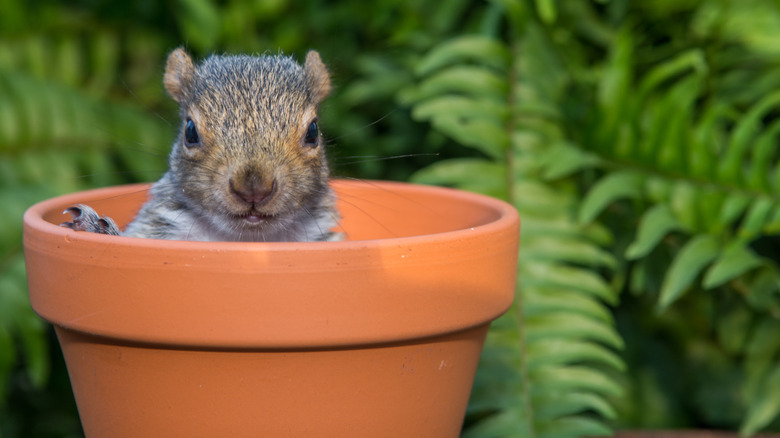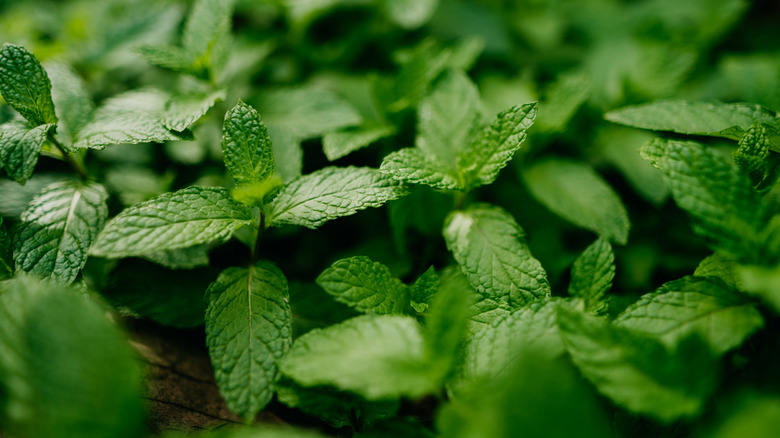The Fast-Growing Herb You Can Plant To Keep Squirrels At Bay In The Garden
Squirrels are something that gardeners seem to be in constant battle with. While some people may try creating DIY squirrel feeders to keep the bird feeders squirrel-free, others simply want to keep them completely out of the garden for good. One way to help achieve that goal is to plant mint. This delicious herb acts as a natural deterrent to squirrels due to its overwhelming aroma. To a squirrel's sensitive nose, gardens with mint seem very unappealing. Unlike a chemical repellant that requires frequent reapplication, mint plants will offer continuous protection while doubling as a useful cooking herb. The plant's aggressive growth habit can be used to create a living barrier that can help safeguard your garden.
Mint's effectiveness comes from its concentrated essential oils, which squirrels instinctively avoid. Peppermint contains the highest concentrations of this oil, and even its dried leaves can deter squirrels from entering the area. Strategically placing mint near common targets, like bulb plants or vegetable gardens, creates an aromatic shield that discourages these critters from nibbling on your hard work. Mint thrives in both garden beds and containers in USDA Hardniness zones 3 through 9, so there are plenty of adaptable placement options for different yard layouts. Position your mint plants upwind of the areas you want to protect, as this will help carry the scent across the entire area.
Growing your mint defense system
Successfully creating this minty barrier requires some understanding of the plant's habits and preferences. Mint is best planted in early spring and does well in a location that receives a nice balance of sun and shade throughout the day. Try to space the plants 18 to 24 inches apart in a rich, moist soil. The healthier the mint, the more potent its critter-repelling abilities will be. If you do see it starting to fail, there are some beneficial soil tips to revive your mint. Since it works well in containers, plant mint in a collection of pots that can be moved around as needed. If you start to see squirrels sneaking in, a little shifting of plants can fix any gaps in your defenses.
As the mint begins to establish itself, a little strategic bruising can help release some extra aromatics. Crushing a few leaves between your fingers will reinforce the scent barrier around your garden or birdfeeders. To add a little extra defense, you can sprinkle some other spices to save your garden from squirrels, like cinnamon. Maintenance is fairly straightforward and the mint can be watered alongside your regular garden plants whenever the dirt begins to dry. Do be mindful of mint's aggressive nature though, without containment, it can overtake garden beds quickly. Using root barriers or pots sunk into the soil will help control the mint's roots from spreading. There are also some herbs that you should growing with mint, so make sure you research how your garden plants will handle mint before planting it.

